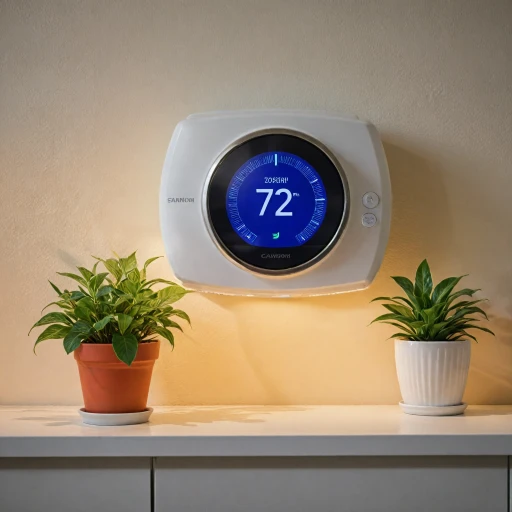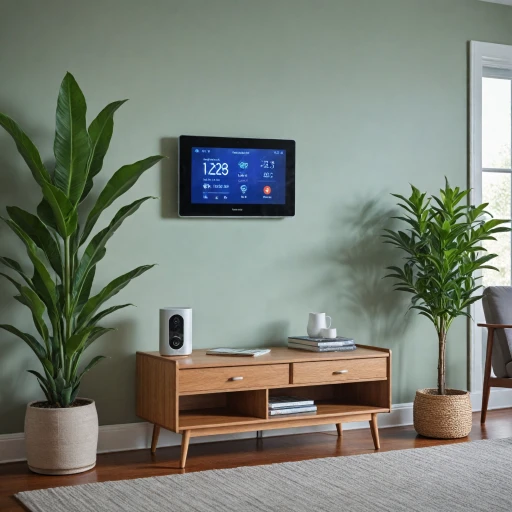Understanding Electric Baseboard Heating Systems
Exploring the Basics of Electric Baseboard Heating
Electric baseboard heating is a popular choice for residential spaces due to its efficiency in small to medium-sized rooms. This heating system uses baseboard heaters installed along the floor-level of a room, often under windows, to evenly distribute heat. Electric baseboard heaters function by heating the air in contact with their metal fins. As the heated air rises, cooler air gets drawn into the bottom of the unit, creating a natural convection cycle.Components and Functionality
The core component of an electric baseboard heater is its adjustable thermostat, which regulates the temperature and cycles the unit on and off to maintain a set comfort level. This is essential for minimizing energy consumption and optimizing efficiency—important considerations in today's eco-conscious environment. The heaters require a double pole thermostat for full control, allowing complete shutoff when not needed. These heaters are typically available in wattages ranging from 500 to 2,000 watts, providing optimal solutions for different room sizes and heating requirements.Key Considerations and Features
- Overheat Protection: Many baseboard heaters are equipped with overheat protection switches to prevent the unit from getting too hot, which can cause damage or create safety hazards.
- Dent-Proof Construction: Quality baseboard heaters come with dent-proof panels to ensure longevity and preserve aesthetic appeal.
- Energy Consumption: Electric baseboards can be connected to smart thermostats that work to enhance energy efficiency.
The Role of Smart Thermostats in Modern Heating
The Impact of Smart Thermostats on Modern Heating
In recent years, the advent of smart thermostats has revolutionized how we manage home heating systems. Despite their sleek design and advanced features, these devices are more than just aesthetically pleasing gadgets. When used in conjunction with electric baseboard heaters, smart thermostats provide unparalleled control over room temperatures.
Smart thermostats are engineered to optimize heating efficiency. By leveraging algorithms and connectivity, they learn your daily schedule and heat preferences, automatically adjusting settings for optimal comfort. For instance, if you consistently leave your bedroom or office at a certain time, the thermostat will adjust the temperature accordingly, reducing energy consumption while maintaining a warm environment.
Another notable feature is the remote access offered by these devices. With a smart thermostat, you can control your heater with your smartphone from anywhere. This can be a massive advantage if you are away but want to ensure the room is warm before returning home.
Beyond convenience, smart thermostats also enhance energy savings. By monitoring energy consumption, they help identify periods when the electric baseboard heater is using excessive watts, allowing users to adjust for more efficiency. Many models come with overheat protection features, ensuring that the baseboard doesn’t become a hazard even as it pumps out heat. This not only contributes to cost savings but also ensures the longevity of your heating systems.
It's essential to acknowledge the transition challenges. While some smart thermostats are equipped to handle double pole setups typical in many electric baseboard heating systems, not all are, requiring careful selection based on your specific home wiring.
For a deeper dive into how smart thermostats enhance modern heating setups, particularly with automatic changeover and optimizing temperature, you can explore the benefits of automatic changeover in smart thermostats.
Benefits of Using Smart Thermostats with Electric Baseboards
Enhanced Control and Precision
Electric baseboard heaters are known for their simplicity and dependability. However, their operational efficiency can significantly improve when paired with smart thermostats. One major advantage is the increased level of control and precision they provide. You can set specific temperatures for different times of the day, which ensures that your space heater only uses energy when it's truly needed. This functionality is ideal for rooms like the bedroom office, where heating needs can vary throughout the day.
Energy Efficiency and Savings
Smart thermostats are designed to optimize energy efficiency. The ability to adjust settings remotely and automate heating schedules reduces unnecessary energy consumption. According to industry experts, homeowners can save up to 10% on heating costs each year by using these smart devices. By enabling features like zoning, where only certain rooms or heaters need to be active, users can enjoy further savings.
Integrating with Existing Systems
With the growing trend of home automation, smart thermostats seamlessly integrate with electric baseboard heating systems. They often feature compatibility with different wattages, volt systems, and types of thermostats, ensuring no disruption in your current heating setup. Products like the Cadet and double pole thermostats are some examples that offer compatibility, power, and customization for your home heating solutions.
Safety Features
Safety is a top priority, and smart thermostats offer peace of mind with built-in safety features like overheat protection and switch stay cool capabilities. These features prevent overheating, protecting your heater white panels, and ensuring the baseboard heater operates safely in your living space. Add to cart options online often highlight these features as strong selling points to help you make informed purchasing decisions.
For more detailed insights on improving your home heating comfort and efficiency using smart thermostats, explore how these devices interact with other systems.
Challenges in Integrating Smart Thermostats with Electric Baseboards
Potential Hurdles in Implementing Smart Thermostats with Electric Baseboard Systems
Integrating smart thermostats with electric baseboard heating systems can present several challenges. These issues may vary based on the system configuration, user expertise, and compatibility of the devices. Understanding these challenges beforehand can aid in better planning and decision-making.- Compatibility Issues: Not all smart thermostats are designed to work with electric baseboard heaters. Many are tailored for central heating systems, which can pose a problem if users don't double-check compatibility. It's crucial to choose thermostats specifically marked to handle the higher voltage and power load (often 240 volt) of baseboard heaters.
- Wiring Concerns: Electric baseboards typically require different wiring configurations compared to other systems. Many smart thermostats operate on low-voltage systems (24V), whereas baseboard heaters often need a direct line voltage (120V or 240V). Ensuring that the thermostat can handle these requirements and provide clear wiring instructions is essential.
- Installation Complexities: Installing smart thermostats for baseboard heaters may require a more involved setup process. This could include dealing with double pole wiring, which is common in such systems. Even though the prospect of a smart-controlled temperature is appealing, incorrect installation can lead to inefficiencies or safety hazards.
- Cost Considerations: Prices for compatible thermostats can sometimes be higher due to their specialized requirements. Analyze product ratings and reviews to ensure a balance between cost and performance. Initial prices aside, consider long-term energy savings when making a purchase decision.
- Room-by-Room Temperatures: Unlike central heating systems, baseboard heaters may not offer synchronous room control without multiple units. Investing in individual thermostats for each room or closely monitoring their operation may be necessary to achieve desired comfort levels.
- Subject to Overheat Risks: Poor integration might lead to heat buildup, demanding units with overheat protection. Look for models that feature dent-proof panels or cool body designs to mitigate these risks in areas like the bedroom or office.
Choosing the Right Smart Thermostat for Electric Baseboard Heating
Options to Consider When Selecting Your Smart Thermostat
Choosing the right smart thermostat for your electric baseboard heater can feel overwhelming, given the vast array of products out there. To simplify your decision-making process, consider the following factors to ensure you select the perfect device to match your heating needs.- Compatibility: Make sure the smart thermostat is compatible with electric baseboard heaters or heaters with similar voltages. Compatibility with your current heating system is crucial for seamless integration and performance.
- Control and Features: Look for an adjustable thermostat that allows for personalized settings in various rooms, be it the bedroom or office. Features such as scheduling, remote adjustment, and energy monitoring can significantly enhance your heating experience.
- Temperature Control: Opt for a product with precision control to maintain consistent room temperatures. Consider thermostats that offer overheat protection to prevent panels from overheating, ensuring your heaters remain safe and efficient.
- Double Pole Option: For electric baseboard heaters, a double pole thermostat may provide enhanced control over individual heaters. This can be beneficial in maintaining energy efficiency and room comfort.
- Installation and Design: Some thermostats offer easy installation with clear instructions, potentially with a simple wire connection. Additionally, consider aesthetics if appearance is important to you; there are options like a white thermostat that can blend seamlessly into room decor.
- Price and Reviews: While evaluating the price, also consider customer reviews and ratings, such as five stars, to gauge product reliability and satisfaction. Budget-conscious consumers may find value without compromising essential features.
- Special Features: Modern thermostats might include features like a cool body to prevent overheating and protection switch systems for added safety.
Selecting the right thermostat will not only improve your home's comfort but can also contribute to energy savings and enhanced heater efficiency. Remember to think about your specific needs and space requirements before making a decision. Taking the time to carefully evaluate these factors will ensure your smart thermostat works with your baseboard heaters effectively.
Installation and Maintenance Tips
Steps to Install Your Smart Thermostat with Electric Baseboards
Upgrading to a smart thermostat can effectively optimize your electric baseboard heating system. Here’s a concise guide to help you through the process:
- Check Compatibility: Always ensure your chosen smart thermostat is compatible with the existing electric baseboard heaters in your home. Look for products that specifically mention compatibility with volt and watt ratings that match your current heating system.
- Preparation: Gather all necessary tools such as screwdrivers and wire connectors. Safety first: always switch off the power to the area where you will be working by turning off the circuit breaker to avoid electrical hazards.
- Removing the Old Thermostat: Carefully detach your old heater thermostat. Remember the wire connections as exactly replicating these when connecting your new smart thermostat is crucial. Labeling wires can help ease this process.
- Wiring the Smart Thermostat: Follow the installation manual for proper wiring instructions. Usually, a double pole thermostat will need specific connections for its four or more wires. If your smart thermostat option includes wire labels or a helpful app, use these resources to your advantage.
- Mounting Your Thermostat: Secure your thermostat onto the wall. Ensure that it is stable and doesn’t compromise the aesthetics of your room. A heater white or sleek design can integrate nicely into any decor.
- System Testing: Once installed, restore the power to your thermostat and heaters. If your heater with the thermostat supports it, initial programming or app connection should be straightforward. Ensure that the space heater functions efficiently with your adjustments.
Maintaining Your Smart Thermostat
Regular maintenance can extend the life of both your smart thermostat and electric baseboards.
- Routine Checks: Periodically check connections and settings to ensure that all components, from the heater electric system to the adjustable thermostat features, are functioning without issues.
- Preventive Measures: Utilize features such as overheat protection, cool body systems, proof panels, and protection switches to prevent overheating and maintain safe operation.
- Cleaning: Dust accumulation can impair performance. Gently clean the thermostat's body and dint-proof surfaces to maintain effective operation.
- Upgrading: Consider staying updated with the latest technology in smart thermostats to continuously improve your heating efficiency and enjoy potential cost savings. Pay attention to product reviews to identify the best options for your home setup.
Proper installation and diligent maintenance ensure your smart thermostat and electric baseboard system operates efficiently, providing comfort in your bedroom, office, or any other room equipped with baseboard heaters. If any issues arise, consult a professional to secure assistance and ensure optimal operation of your space heating system.









